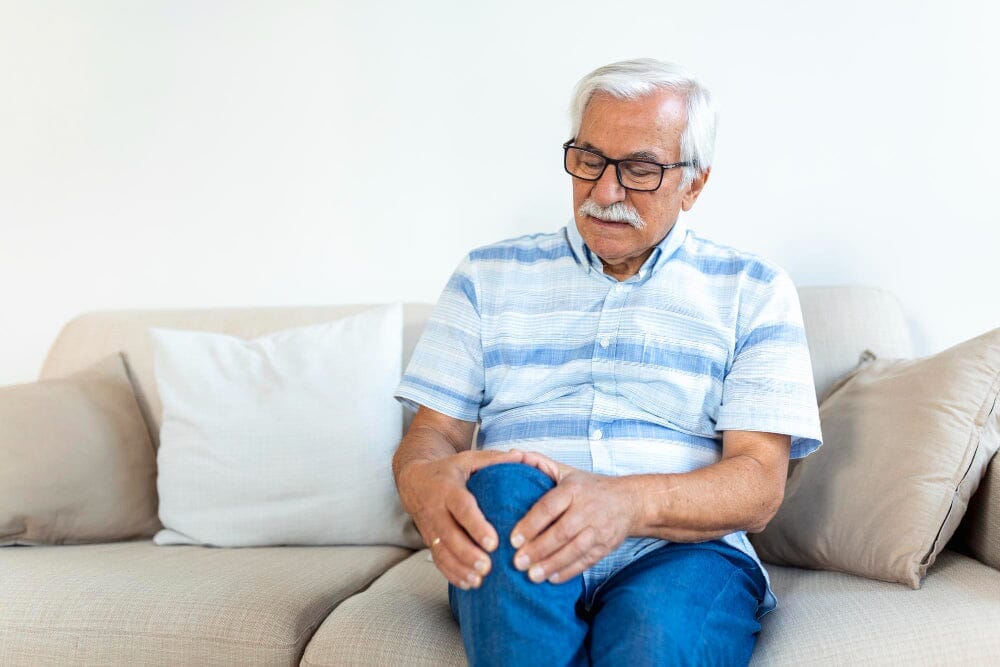
What is Rheumatoid Arthritis (RA)?
Time to read 6 min
Time to read 6 min
Our human body has an immune system that protects it from foreign substances like disease-causing bacteria and viruses. A person gets Rheumatoid Arthritis when this immune system mistakenly attacks our joints.
Rheumatoid Arthritis, or RA for short, is an autoimmune disease. There is a tissue lining in our joints called synovium.The synovium generates a fluid that lubricates our joints to keep them flexible.
When the immune system attacks the joints, the synovium gets thickened, causing inflammation and pain around the joints.
If left untreated, RA can harm the cartilage and even the bones, resulting in loss of mobility or even joint deformity. Joint damage is usually irreversible in this case.
The commonly affected joints are
RA usually develops between the ages of 30 and 60.
What is known about Rheumatoid Arthritis is that it is caused by the attack of our own immune system, but not the why.
However, certain studies have shown that factors like genes, hormones as well as the environment play a part in it. With respect to genetic markers, it has been observed that people with an RA genetic marker have five times more chances of getting the disorder than those who don’t.
Many other factors like obesity, female hormones, bacteria, virus, physical and mental trauma, etc. are under study to understand their effect, if any, in causing this disease.
At times, certain infections (and quite controversially, immunization) can also cause Rheumatoid Arthritis. Like most autoimmune disorders, RA affects more women than men around the world.
Also, smokers have a higher risk of getting RA and evidence also suggest that smoking influences the course of RA. Consumption of certain foods like high quantities of red meat and low vitamin C also increase the risk of RA.
Few of the commonly seen symptoms are given below:
At times, people may also experience fatigue, loss of appetite and even a low-grade fever. The symptoms may appear and disappear in flares.
Warning Box: At times, untreated RA can also cause issues across the body like dry eyes, or impaired vision, dryness in the mouth, rheumatoid nodules (lumps under the skin), shortness of breath caused by lung inflammation, or even anemia.
The symptoms of RA are more or less similar to that of regular arthritis, Hence, it is possible that a person may be referred to a rheumatologist. The specialist studies the family as well as medical history, and then the symptoms (physical examination), periodicity and severance of occurrence, etc.
Some tests can also conclusively prove the presence of Rheumatoid Arthritis
The treatment for RA could be an early treatment aimed at reducing the disease, achieving remission through targeted treatment, or controlling it to reduce joint damage.
Treatments are aimed towards:
Allopathy
Allopathic drugs for RA are of two types aimed at easing symptoms as well as slowing the disease activity.
Drugs for easing symptoms
For this purpose doctors use, nonsteroidal anti-inflammatory drugs (NSAIDs) that are available as over-the-counter medicines and by prescription. They help in easing pain and inflammation.
Such drugs include ibuprofen, ketoprofen and naproxen sodium, and a few more prescription drugs. These are oral medicines, while a few ointments can also be applied directly to the swollen joints for relief.
Drugs for slowing the disease
Ayurveda
In a study sponsored by the World Health Organization (WHO), the efficacy of Ayurveda on RA was studied at Ayurvedic Trust, Coimbatore, India.
290 patients were studied over a period of 7 years and evaluated as per the American Rheumatism Association’s criteria. The results from the study suggested that there was significant improvement in RA patients, even in those with severe mobility issues.
According to Ayurveda, RA is “Ama Vata” and it is treated in three different ways, namely:
Along with the above forms of treatment, diet inputs as well as lifestyle suggestions are also provided to patients.
There are no conclusive studies that provide evidence to indicate that homeopathy is effective in treating RA. However, as per an article published in the British Homeopathic Association by Dr. Fisher, a wholesome approach is used.
This means that the patients’ problems, symptoms, and any other life issues that could have led to the development of RA are studied. The patient is then treated for mental as well as constitutional issues.
Nutrition
RA patients are usually advised to follow a healthy, balanced as well as an anti-inflammatory diet. Following a Mediterranean diet rich in good fats and fresh produce can help immensely. Some foods you should consume include
RA patients are also advised to avoid fast food or processed foods.
Exercise
Low-impact aerobics, and muscle strengthening exercises aimed at improving and maintaining flexibility, can help you immensely. However, when there is swelling and pain, rest is advised and not resting can cause grave injuries.
Suggested exercises are:
Be sure to consult with a physiotherapist to understand how and at what intensity each of these exercises can be performed.
Lifestyle Changes
As with most autoimmune conditions, lifestyle changes can help you immensely, not just in reducing the severity of symptoms but also in improving your quality of life. Here are a few suggested changes:
In order to prevent RA, especially if you are genetically predisposed, try and avoid all possible risk factors.
* Medical Disclaimer - The following information is for educational purposes only. No information provided on this website, including text, graphic, and images, are intended as substitutes for professional medical advice. Please consult with your doctor about specific medical advice pertaining to your condition(s).